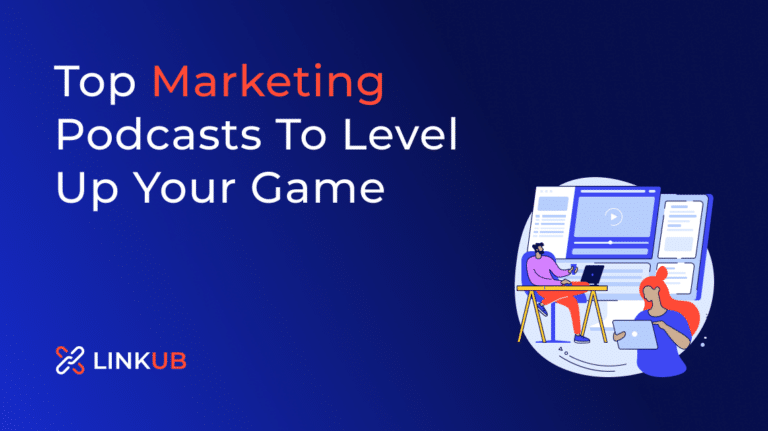50 Best Digital Experience Platforms in 2024
Are you struggling to create seamless, engaging digital experiences for your customers in this fast-paced, ever-evolving digital landscape?
We hear you. In today’s world, an estimated 89% of companies compete primarily based on customer experience.
That’s why we’ve put together this short and sweet listicle of the best digital experience platforms (DXPs) to help you increase your online presence and keep your customers coming back for more. Let’s dive in!
Top Digital Experience Software
Do you have a digital experience tool?
Methodology
The ranking of the digital experience platforms is determined by considering several factors, including the number of citations and user reviews they have received.
Most Used Digital Experience Platforms
1.
Optimizely is a leading digital experience platform (DXP) that helps businesses create personalized experiences and optimize user engagement. Key benefits include:
- A/B testing: Run experiments to compare design variations and optimize the user experience.
- Personalization: Tailor content and messaging to cater to different audience segments.
- Multichannel support: Optimize experiences across web, mobile, and connected devices.
- Analytics integration: Gain insights into user behavior to drive data-driven decisions.
- Scalable: Easily adapt to business growth, from small startups to enterprise-level organizations.
Pricing: Paid
Pricing page: https://www.optimizely.com/plans/

Adobe Experience Manager (AEM) is a comprehensive digital experience platform (DXP) that enables businesses to create, manage, and optimize digital content across channels. Key benefits include:
- Content management: Centralized system for managing digital assets and content.
- Personalization: Deliver tailored experiences to diverse audience segments.
- Multichannel support: Streamline content delivery across web, mobile, and other platforms.
- Integration: Seamlessly connect with other Adobe solutions for end-to-end digital experience.
- Scalability: Accommodates businesses of all sizes, from SMBs to large enterprises.

3.
Contentstack is a headless content management system (CMS) and digital experience platform (DXP) that enables businesses to create and deliver content across multiple channels. Key benefits include:
- API-first approach: Streamlines content delivery and integration with various platforms.
- Flexibility: Build and manage content-rich applications without being tied to a specific front end.
- Scalability: Adapt to changing business needs and accommodate growth.
- Customizable workflows: Facilitate collaboration and improve efficiency across teams.
- Integration: Connect with various tools and services to create seamless digital experiences.
Pricing: Paid
Pricing page: https://www.contentstack.com/pricing/

4.
Acquia is a powerful digital experience platform (DXP) built on the open-source Drupal content management system, helping businesses create and manage personalized digital experiences. Key benefits include:
- Flexibility: Offers extensive customization and integration options with its open-source foundation.
- Personalization: Tailor content and messaging for different audience segments.
- Multichannel support: Deliver engaging experiences across web, mobile, and digital touchpoints.
- Scalability: Accommodates businesses of all sizes, from startups to large enterprises.
- Robust ecosystem: Leverages a large community of developers and partners for continuous innovation.
Pricing: Paid

5.
Sitecore is an integrated digital experience platform (DXP) that helps businesses create, manage, and optimize personalized digital experiences across channels. Key benefits include:
- Unified platform: Combines content management, digital marketing, and commerce capabilities.
- Personalization: Tailor content and messaging to cater to different audience segments.
- Multichannel support: Streamline content delivery across web, mobile, and other platforms.
- Analytics integration: Gain insights into user behavior to drive data-driven decisions.
- Scalability: Adapts to business growth, from small organizations to large enterprises.

6.
Salesforce, known for its robust CRM, offers a digital experience platform (DXP) to help businesses create personalized digital experiences and drive customer engagement. Key benefits include:
- Customer 360: Gain a holistic view of customers for improved targeting and personalization.
- Integration: Seamless connectivity with various Salesforce tools and third-party applications.
- Multichannel support: Optimize experiences across web, mobile, social media, and other channels.
- AI-powered insights: Utilize Einstein AI to drive data-driven decision-making and automation.
- Scalability: Adapts to business growth, catering to organizations of all sizes and industries.
Pricing: Paid

7.
SAP Fiori is a user experience (UX) framework and digital experience platform (DXP) for SAP applications designed to create personalized and streamlined experiences. Key benefits include:
- Role-based design: Tailors user interfaces to specific roles for improved efficiency and ease of use.
- Responsive design: Adapts to various devices, including desktops, tablets, and smartphones.
- Integration: Seamlessly works with SAP S/4HANA, SAP Business Suite, and other SAP products.
- Extensibility: Allows customization of apps to meet unique business requirements.
- Modern look and feel: Enhances user experience with intuitive and visually appealing interfaces.

Further reading
What Is a Digital Experience Platform?
Digital experience platforms (DXP) are software applications that manage digital experiences across various interfaces. Content management, e-commerce, personalization, and experimentation are just a few of the DXP’s many features and benefits. According to Gartner, a DXP is an “integrated set of core technologies that support the composition, management, delivery, and optimization of contextualized digital experiences.”
Content management systems have evolved into digital experience platforms, which better represent the whole customer lifecycle, from content production through distribution, measurement, and iteration, in a single platform. DXPs take care of most of the data management and user experience so that marketers can concentrate on the engagement of their customers.
What Are DXP Best Practices?
📍 Unique content
Customers can find relevant material through every company touchpoint, such as blogs and videos. They begin to rely on trusted brands for product information.
📍 Customer support
When clients want assistance, they quickly locate information pertinent to their needs. In other words, a DXP can provide clients access to FAQs and other alternatives based on their prior usage.
📍 Sales
Digital interactions may go above and beyond simple purchases. Customer’s relationship with companies grows when they interact with tailored material and other consumers in forums. Tips, easy warranty management, and rewards programs help customers get the most out of their products.
📍 Business partnerships
A DXP simplifies the selling process for partners by making it easier for them to locate and handle opportunities. Partners can switch between tasks such as transaction registration, key performance indicators measurement, and real-time support in seconds.
What Is the Difference Between DXP vs. CMS vs. WEM vs. DAM?
DXP may seem like a content management system (CMS), digital asset management (DAM), or perhaps a web experience management (WEM) solution to you. These technologies have some parallels, but only DXP offers control beyond content to each touchpoint. Why? A closer examination of each technology reveals the answer.
Content management systems or CMS
CMS is a software tool that allows users to produce, modify, publish, and organize digital information on a large scale. Most companies use a CMS to manage digital material. However, the customization and integration features of DXPs are missing from CMS software. CMS’s concerns are maintaining and distributing content than the end-user experience of the material itself.
Web experience management or WEM
In some ways, WEM looks like CMS. They assist with content generation, editing, and publication. In addition, they boost cross-channel capabilities and personalization capabilities. These technologies collect user activity data to personalize content. WEMs, on the other hand, are content-centric and can only support a limited number of customer journeys beyond content customization. Additionally, because they restrict cross-departmental cooperation, they lead to a compartmentalized functioning method.
Digital asset management or DAM
In recent years, digital asset management systems have grown to provide more control over valuable content management. Large enterprises use digital asset management systems to store digital assets, including photographs, videos, and textual content. DAMs are particularly beneficial for managing assets linked to a company’s brand standards or rights-related assets. DAMs make it simple to locate, distribute, and remove digital assets.
A DXP unifies all of these capabilities and systems. A DXP may also incorporate a CMS or interact with a DAM. A DXP, on the other hand, handles much more than just content. A digital experience involves the material and data users interact with and their actions.
Wrap Up
So, there you have it! We’ve covered the cream of the crop regarding digital experience platforms, ensuring your customers stay engaged and satisfied across all touchpoints.
These top-notch DXPs offer powerful tools to personalize, optimize, and analyze your digital interactions, ultimately boosting brand loyalty and driving growth.
Remember, delivering outstanding customer experiences in this digital age is critical to staying ahead of the competition.
So go on, explore these fantastic DXPs, and transform your online presence into a customer magnet!
FAQs
A DXP is an integrated software suite that enables organizations to create, manage, and deliver personalized, omnichannel experiences across multiple digital touchpoints, such as websites, mobile apps, social media, and other digital channels. DXPs help businesses engage with customers and drive customer loyalty, conversions, and overall satisfaction.
A DXP combines various software components and tools, such as content management systems (CMS), customer relationship management (CRM) systems, e-commerce platforms, analytics, and personalization engines, into a single, unified platform. This integration allows businesses to streamline digital operations and deliver seamless, data-driven, personalized customer experiences across multiple touchpoints.
Some benefits of using a DXP include the following:
• Improved customer engagement and satisfaction
• Enhanced personalization and targeting capabilities
• Streamlined content management and delivery across multiple channels
• Unified data and analytics for better decision-making
• Scalability and flexibility to meet evolving business needs
• Increased conversions and revenue
When evaluating a DXP, consider the following features:
• Content management and creation tools
• Personalization and targeting capabilities
• Omnichannel support and integration
• Customer data and analytics
• E-commerce and marketing automation tools
• Integration with third-party tools and systems
• User roles and permissions management
• Scalability and performance
To choose the best DXP for your business, consider the following factors:
• Define your digital experience goals and requirements
• Assess ease of use and learning curve
• Evaluate features and functionality
• Consider integration with existing tools and systems
• Compare pricing and available plans
• Read user reviews and testimonials
• Take advantage of free trials or demos
Many DXPs offer multilingual and regional support, allowing businesses to deliver tailored customer experiences across different languages, regions, and cultures. This functionality may include language translations, content localization, and currency and payment method support for e-commerce.
While a CMS primarily focuses on content creation, management, and delivery for websites and web applications, a DXP offers a broader range of capabilities to support personalized, omnichannel experiences across multiple digital touchpoints. A DXP may include a CMS as one of its components but also incorporates other tools such as CRM, e-commerce, analytics, and personalization engines.
Yes, a DXP can cater to the needs of both B2B and B2C businesses by providing the necessary tools and features to create and deliver engaging, personalized digital experiences. The specific requirements and use cases may differ between B2B and B2C businesses, so choosing a DXP that aligns with your organization’s objectives and target audience is crucial.
The cost of a DXP varies depending on the provider, features, and pricing model. Some solutions offer tiered subscription plans based on the number of users, features, or available resources. Enterprise plans with custom pricing may also be available for larger organizations or specific requirements.
Yes, most DXP solutions can integrate with various marketing and analytics tools, such as email marketing platforms, social media management tools, CRM systems, and analytics platforms. These integrations help businesses streamline marketing efforts, consolidate data, and enhance customer engagement.


![Content Marketing: Tactics and Trends [2024]](https://linkub.io/wp-content/uploads/2022/06/Guest-post-smart-tactics-and-current-trends-content-marketing-2022-768x432.png)




